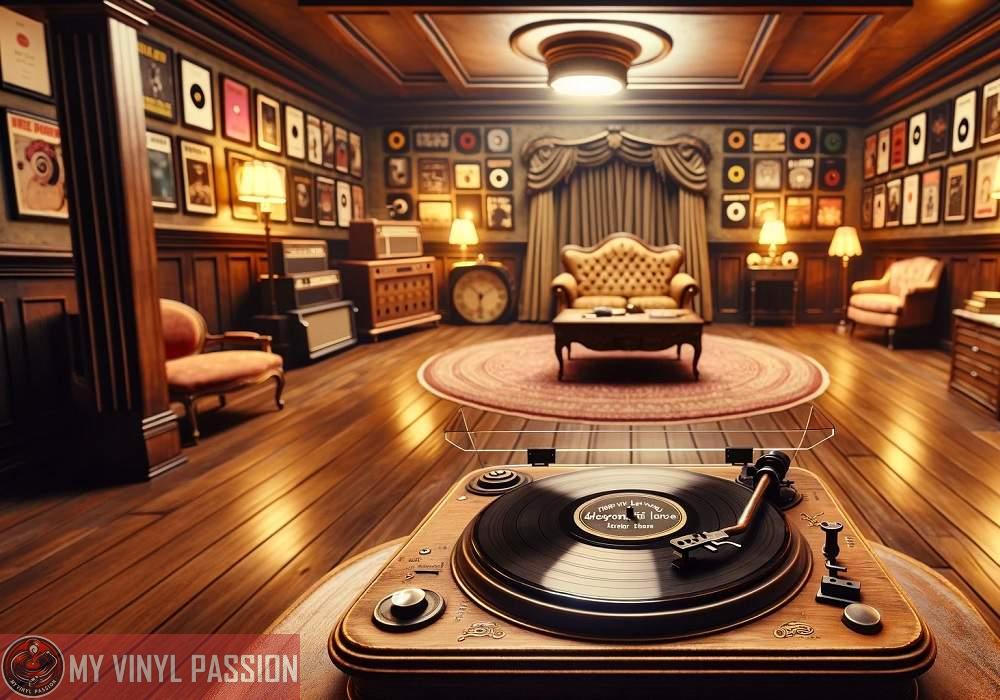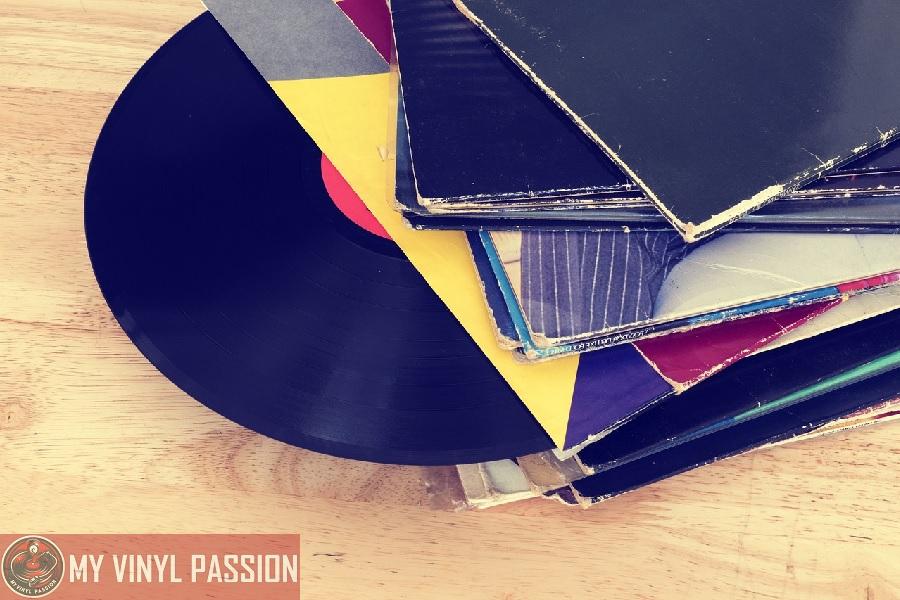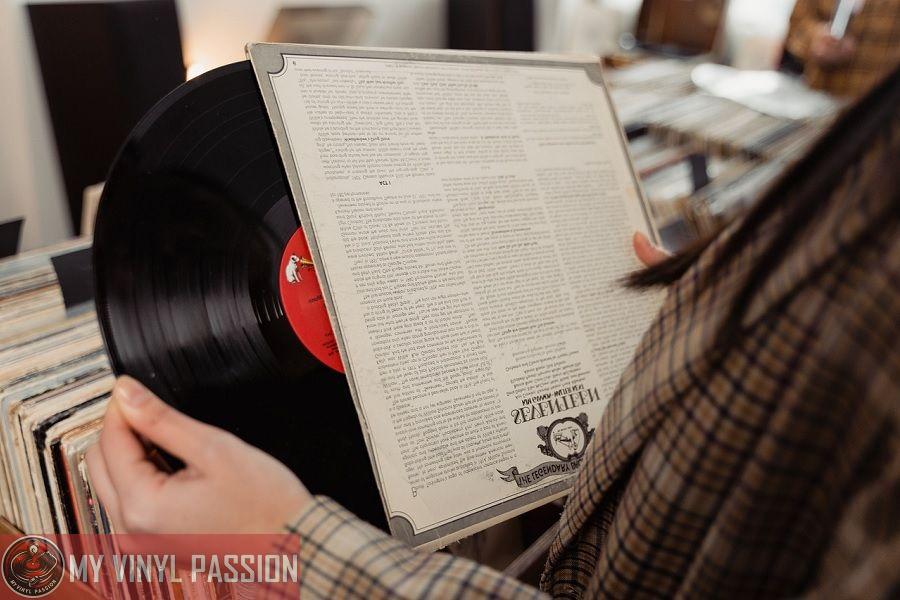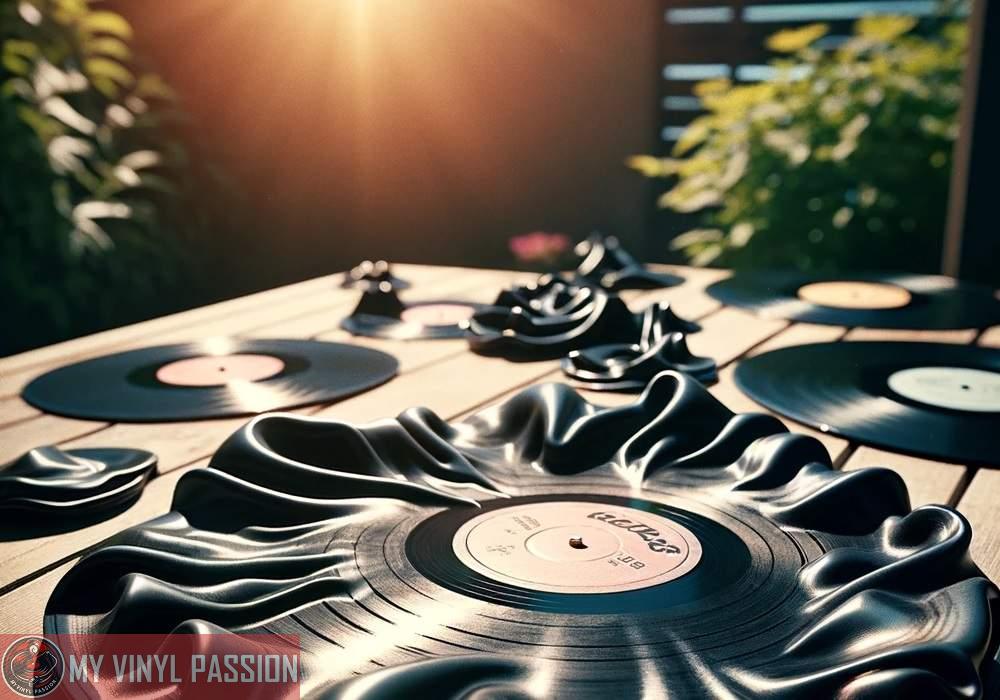The longevity of vinyl records is a topic of interest for both collectors and casual listeners.
We understand that playing a vinyl record is an experience which combines audio pleasure with the tactile engagement of handling the record and placing the needle.
While there’s no definite limit to how many times a record can be played, it’s essential to be aware that the condition of the record and the quality of the turntable play a critical role in preserving the life of a vinyl.
In Summary
The lifespan of a vinyl record is influenced by factors like the quality of vinyl, manufacturing process, storage conditions (temperature and humidity), and handling during play.
Proper turntable setup, including accurate tracking force and anti-skating settings, along with regular maintenance of the needle, is crucial for the longevity and sound quality of vinyl records.
Frequent use can lead to wear on the record grooves, affecting sound quality over time, so balancing enjoyment with preservation is key to maintaining the condition of vinyl records.
While there’s no strict rule for how often you can play a vinyl record, taking good care of both the record and the turntable, along with moderate and mindful playing, will help extend the lifespan of your vinyl collection.
Given the proper care and equipment, we can enjoy a vinyl record for numerous plays over many years. Factors that contribute to the lifespan of a vinyl include the weight of the tonearm, the condition of the stylus, and the cleanliness of the record itself.
Scratches or dust can significantly affect the sound quality and eventually damage the grooves. Regular maintenance and handling records with clean hands can help extend the number of plays.
By delving into proper storage and play etiquette, we optimize the playback life of our vinyl records. It’s a delicate balance; knowing how often we can play a vinyl record is less about counting the number of rotations and more about the quality of care we provide to these cultural icons.
Vinyl Record Basics
In discussing the essentials of vinyl records, we must consider their physical makeup and the variations in their sizes and playback speeds.
Material and Composition
Vinyl records are primarily made from polyvinyl chloride, commonly referred to as PVC. This material accounts for the record’s durability and its ability to reproduce sound. To ensure the best playback quality, it’s crucial to keep our records free from dust and scratches. Regular cleaning and proper handling will help in maintaining the integrity of the grooves where the audio is stored.
Record Sizes and Speeds
Records come in different sizes, each associated with a specific playback speed measured in revolutions per minute (RPM). The three main sizes we encounter are:
- 7-inch: Typically played at 45 RPM and often referred to as singles.
- 10-inch: Less common, these can be played at 78 RPM and hold more music than a 7-inch.
- 12-inch: Commonly played at 33 1/3 RPM and known as LPs (long play), these are the standard for albums.
Each size and speed combination is designed to optimize the audio quality and the amount of music that can be stored on the record. It’s important for us to use the correct speed setting on our turntable to ensure the record plays as intended.
Record Longevity Factors
When it comes to the durability of vinyl records, several factors come into play that can significantly affect their lifespan. We’ll dive into the specifics surrounding manufacturing quality, storage conditions, and handling and usage, to ensure you have the knowledge to keep your records spinning for years to come.
Manufacturing Quality
Materials: The materials used in the manufacturing process are critical. High-quality vinyl, which is thicker and well-pressed, tends to have fewer imperfections and can withstand more plays. Records made from virgin vinyl are known for their durability and long-lasting playability.
Production Process: A precision-crafted record, where attention to detail is prioritized during the pressing process, often results in a more robust product. This entails careful temperature control and adequate pressing times.
Storage Conditions
Temperature and Humidity: Optimally, we should store our records in a controlled environment with a stable temperature of around 65-70 degrees Fahrenheit and a humidity level of 45-50%. These conditions help prevent warping and mold growth.
Upright Storage: Always store vinyl records upright to avoid unnecessary pressure that can cause warping or ring wear. Adequate spacing between records is essential to prevent them from squeezing each other, which can lead to damage over time.
Handling and Usage
Clean Handling: We must handle records by their edges and label to minimize the contact with oils from our skin which can degrade the vinyl surface. It is crucial to keep them clean; dust and dirt can cause scratches and affect the quality of playback.
Turntable Setup: A well-maintained turntable is just as important as how we handle the records themselves. Ensuring the stylus is clean and the tracking force is correctly set can drastically extend the life of a vinyl record.
Playing Frequency Recommendations
When discussing how often to play vinyl records, we must consider both the joy of daily listening and the necessity of long-term preservation.
Daily Playing Implications
Playing vinyl records on a daily basis is a testament to the love we have for our collections. However, we must understand that each play can introduce a small amount of wear to the record.
Depending on the equipment quality, setting accuracy, and care during use, daily plays can be sustainable. Here are some specific pointers:
- Turntable setup: Ensuring the turntable’s tonearm and stylus are properly calibrated can minimize wear.
- Environmental conditions: Records should be played in clean environments and handled with care to avoid dust and scratches.
Long-term Preservation
To preserve a vinyl record for the long term, we recommend moderation in playing frequency coupled with meticulous care. Here are key guidelines:
- Infrequent plays: Limit play frequency to avoid cumulative wear. A good rule of thumb is to give a record a rest after playing it a couple of times.
- Proper storage: Store your records vertically and in a climate-controlled environment to maintain their condition over time.
By observing these recommendations, we can enjoy our vinyl records while ensuring they remain in good condition for future listening sessions.
Turntable Setup and Care
Proper setup and meticulous care of our turntable are crucial for both the longevity of our vinyl records and the quality of playback. We’ll discuss key aspects including needle quality, tracking force, and anti-skating settings to ensure optimal performance.
Needle Quality
The condition of the needle, or stylus, is paramount in turntable maintenance. A high-quality needle ensures that our records are played back without damage and with the best sound reproduction.
We should check the needle for wear after every 1000 hours of play and replace it when necessary. Utilizing a microscope or a magnifying tool often helps us in examining the needle’s condition more precisely.
Tracking Force
The tracking force refers to the amount of weight with which the needle rests on the record. If this force is not set correctly, it can lead to skipping or even record damage.
Manufacturers typically specify the optimal tracking force for cartridges, and we must use a tracking force gauge for accurate calibration. Here’s a general guideline for the tracking force:
- Light tracking force: between 1.5g to 2g
- Heavy tracking force: between 2g to 2.5g
We should follow the manufacturer’s recommendation for the specific cartridge we are using.
Anti-skating Settings
Anti-skating is a feature that counteracts the natural pull of the needle towards the center of the record, ensuring even wear on our records.
This setting should match the tracking force to maintain consistent sound quality and prevent record groove damage. To set the anti-skating, we typically use a small dial on the turntable that corresponds with the weight of the tracking force.
Maintenance of Vinyl Records
Proper maintenance is essential to ensure the longevity and sound quality of our vinyl records.
By utilizing effective cleaning techniques and practicing scratch and dust prevention, we can keep our collections in top condition.
Cleaning Techniques
Materials Needed:
- Soft lint-free cloth
- Record cleaning solution
- Carbon fiber brush
To Clean a Vinyl Record:
- Dust the Surface: Gently brush the surface with a carbon fiber brush to remove any surface dust.
- Wipe with Solution: Apply a record cleaning solution to the lint-free cloth, not directly on the record. Wipe the record in a circular motion following the grooves.
- Dry the Record: Allow the record to air dry completely before playing or storing.
Impact on Playback: Consistent cleaning can prevent debris build-up, which maintains clear sound quality.
Scratch and Dust Prevention
Preventative Measures:
- Handle with Care: Always hold records by the edges or the label to avoid adding oils or dirt.
- Inner Sleeves: Store records in high-quality anti-static inner sleeves.
- Proper Storage: Keep records upright in a cool, dry place away from direct sunlight.
Managing the Environment:
- Minimize exposure to dust by cleaning the area where we store and play our records regularly.
- Use a record clamp or weight to stabilize records during play, reducing the risk of accidental scratches.
By incorporating these practices into our vinyl care routine, we ensure that each record remains pristine, allowing us to enjoy our music collection at its best for years to come.
Impact of Play on Sound Quality
When we consider the longevity of vinyl records and their sound quality, frequent use can indeed have an impact.
The grooves on a vinyl record are delicate; they can be worn down over time due to the mechanical process of the stylus—or needle—tracing these grooves. Each time we play a record, the friction caused by the stylus has the potential to degrade the grooves slightly.
Playing Frequency and Wear:
- Occasional Playing: Minimal impact on sound quality, preserving the record’s integrity over time.
- Frequent Playing: Increased wear on grooves, leading to potential sound quality reduction.
Sound quality degradation is often gradual. Initially, we may not notice changes, but as the grooves wear down, the audio fidelity can diminish, resulting in less crisp highs and muddled lows.
The presence of background noise such as pops and crackles may increase as well. An article from Twentieth-Century Music suggests that the interplay of the physical medium—like vinyl surface sounds—and the recorded audio plays a role in our perception of sound quality.
Interestingly, the knowledge of these effects can indeed affect our listening experiences; a study mentioned in Frontiers in Psychology implies our expectations regarding the format, such as vinyl, may color our perception of the sound quality.
To maintain optimal sound quality, we must balance our desire to frequently enjoy our records with the necessity of preserving them.
Proper care and handling, such as cleaning the records and using a high-quality stylus, are essential in mitigating the impact of play on sound quality. Our enjoyment of vinyl necessitates a dedication to preserving both the medium and the auditory experience.
Professional and Collector Insights
When we discuss the longevity of vinyl records, we typically base our understanding on both professional care standards and the experiences of avid collectors.
Coming from a perspective that combines expertise with a deep passion for vinyl, we can offer a multifaceted view on the durability and care of these cherished items.
Firstly, it’s vital for us to underscore the importance of handling and storage. Collectors often stress that the way in which records are handled, played, and shelved directly impacts their lifespan. Proper handling includes:
- Cleaning: Each play should ideally follow a record cleaning to remove dust and debris.
- Playback Equipment: Using a high-quality, well-calibrated turntable minimizes groove wear.
In terms of frequency, there’s no definitive number of plays a record can withstand, as this can vary greatly depending on several factors. Yet, insights from those deeply involved in the record collecting community point out that quality pressings can endure numerous plays if maintained correctly.
- Light Use: Can last many years, playing once per week or less.
- Moderate Use: More frequent playing may require careful monitoring for signs of wear.
There’s an understanding that the lower the frequency of plays and the higher the quality of care, the longer a record will remain in good condition. Each playback has the potential to introduce some wear, but with attentive care, our vinyl treasures can provide enjoyment for decades.
FAQs
Does playing a vinyl record frequently damage it?
Frequent playing can lead to wear and tear over time. Each play slightly wears down the grooves on the record. But, with proper handling and equipment maintenance, you can minimize this damage.
How can I tell if my vinyl record is getting worn out from playing too often?
Signs of wear include increased surface noise like pops and crackles, reduced sound quality, and visible scratches or scuffs on the record’s surface. If you notice these issues, it might be time to reduce the frequency of plays.
What are the best practices for playing vinyl records to extend their lifespan?
To extend the lifespan of your vinyl records, ensure that your turntable is properly set up, handle the records by their edges, keep them clean, and store them vertically in a cool, dry place. Also, giving them a rest between plays can help.
Is there a specific number of times I can safely play a vinyl record?
There’s no specific number, as it depends on various factors like the quality of the record, the condition of the turntable, and how the record is handled and stored. Generally, with good care, a vinyl record can endure many plays over several years.
Can the type of turntable I use affect how often I can play my vinyl records?
Yes, the quality and condition of your turntable play a significant role. A well-maintained turntable with a properly calibrated tonearm and stylus exerts less wear on the records, allowing for more frequent plays without significant damage.





